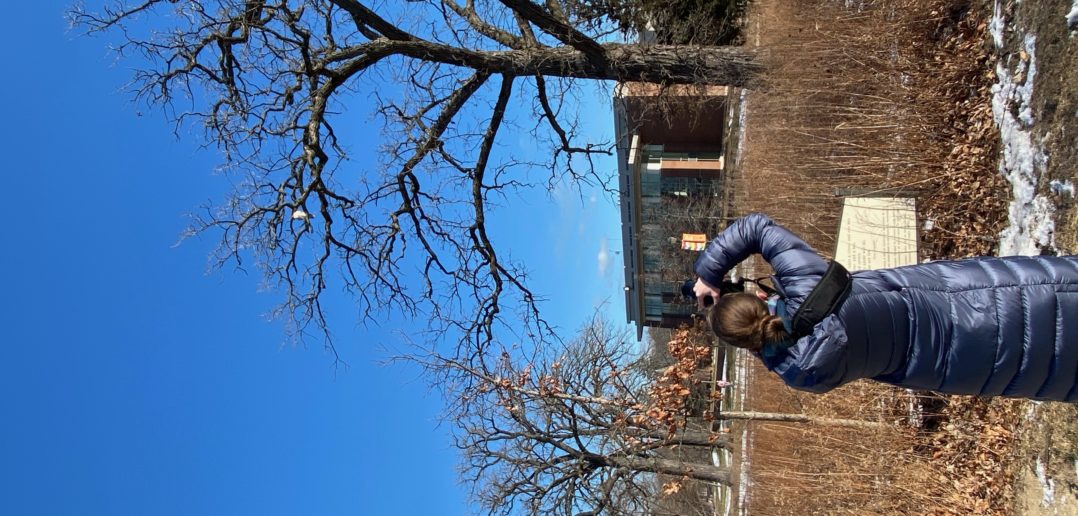By Reece Wearing ’24
Staff Writer
“A thing is right when it tends to preserve the integrity, stability, and beauty of the biotic community. It is wrong when it tends otherwise,” claims Aldo Leopold, establishing what has since been referred to as the Land Ethic. On the Lake Forest College campus, three locations—Shooting Star Savannah, Reverie Prairie, and the McClure Rain Garden—exemplify the College’s attempts to follow the Land Ethic; however, the College consistently underserves its own biotic community—its students—by refusing to invest sufficient resources into these spaces.
At first glance, the presence of the restoration sites seems to align with the Land Ethic. Associate Professor of Environmental Studies Glenn Adelson uses the sites to teach his field botany courses, where students learn to identify hundreds of species of wildflowers. Last summer, Eastern Bluebirds nested on campus for the first time in living memory, frogs inhabited the Rain Garden, and doe dropped their fawns in the Savannah, says Department of Environmental Studies Chair Ben Goluboff.
However, historically the College’s intent in establishing these sites has not aligned with the Land Ethic. In 1992, the College gave the greenlight for Shooting Star Savannah when they realized an on-campus restoration site meant they wouldn’t have to pay for the upkeep of the lawn. The McClure Rain Garden was planted when the City of Lake Forest mandated that the College dig a standard retention pond to mitigate runoff from the impermeable surfaces (sidewalk, roofing, parking lots, etc.) added to campus during the construction of the Lillard Science Center. Goluboff, Adelson, and Professor Jeffrey Sundberg pitched the idea of planting native grasses to create an ecosystem that mimics a wetland. In both instances, the College saw a way to maximize the value of property, and the ecosystems themselves becoming healthier was basically a happy accident. The exception to this rule is Reverie Prairie. Reverie stands adjacent to the Quad, and it was planted due to student interest in having a central restoration site on campus. However, even though the College loves to show Reverie off to visitors, it still receives much less time and attention than the Quad.
Both Adelson and Goluboff cite student use as the primary function of the sites. Despite this, the College has not invested sufficient resources into them. They have been planted with mostly unpaid student labor, the trails going through them are overgrown, they are in out-of-the-way locations, and they were allowed to be planted only when there was no other use for the land. Contrast this to the Middle Campus Quad. The College pays for the Quad to be tended to, hosts events there, and maintains a marked air of pride about the Quad. Both the Quad and the restoration sites are for the benefit of the students, yet one receives far more attention than the other. If the restoration sites were simply given more attention, students could use the trails and study under a burr oak, surrounded by dozens of native flowers and serenaded by the buzzing of bees and other pollinators. With wild habitats disappearing, an expanding human population, and the increase of atmospheric carbon showing no signs of letting up, the College cannot afford to ignore investing in biodiversity when it has never been disappearing more quickly. To do so would not only be irresponsible but would also rob students of the opportunity to see a real change in their community.
The restoration sites are for the benefit of students, and they deserve all the effort the College puts into other student spaces. Students should get a say in how the restoration sites are managed, as they did with Reverie. Furthermore, the College should lavish all the time and expenses on the restoration sites that are lavished on other endeavors for the benefit of students, such as football games, social events, and management of the Quad. Across Sheridan Road from Middle Campus, progress is underway for a new restoration site. Time will tell if the College invests the resources and attention owed to their students, or if it will continue to consider the benefits of restoration to the student body as secondary to its budget.


